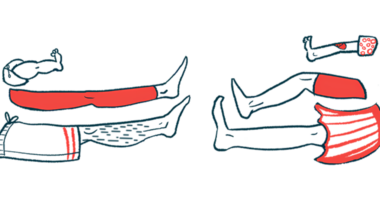Study of Keyboard Typing as Way of Monitoring Motor Skills Planned

nQ Medical and EvergreenHealth are looking for people with early stage Parkinson’s disease to enter a monthlong study of a software tool — known as neuroQWERTY — to help track motor symptoms by monitoring how fingers interact with a computer’s keyboard.
The study, expected to start in July, will enroll about 50 patients at the Booth Gardner Parkinson’s Care Center at EvergreenHealth in Washington state. Four in-person visits to that center, one for each of the study’s weeks, are required.
Eligible patients must have a Parkinson’s diagnosis made within the previous 10 years. They also must be willing to install the tool on their personal computer, and to use that computer for an average of at least 15 minutes daily for four weeks.
Data, collected through home computer use between doctor visits, are expected to better inform care plans for symptom management.
Findings from this trial will also help to support a request for regulatory clearance for the tool’s use, Richie Bavasso, CEO of nQ Medical, said in an email response to questions.
People interested in participating are asked to contact the EvergreenHealth research team at 425.899.5385. Compensation will be provided, a press release stated.
“This study is tremendously important to the PD [Parkinson’s disease] community. Having more thorough, long-term, objective data that tells the full-spectrum story about a patient’s symptoms overtime means that we can make even more informed decisions about the next steps in their care plan for PD symptom management,” said Rich Bavasso, founder and CEO of nQ Medical.
Parkinson’s begins subtly, and its early stages provide the best opportunity to intervene. However, motor symptoms like tremor and rigidity are usually mild and may go unnoticed, posing a challenge to doctors.
A motor exam helps doctors to determine and characterize these motor symptoms, but is a snapshot of disease activity. To collect objective data between doctor visits, researchers developed a software tool — neuroQWERTY — that uses typing patterns as a digital biomarker of motor symptoms.
The tool, compatible with both Apple- and Windows-based computers, measures how fast a person is typing on a keyboard and how much pressure is applied to each key.
Then, using machine learning, a branch of artificial intelligence that uses data to imitate the way that humans learn, the tool looks for patterns in the way the person types.
Data generated will be compared to commonly used scales for Parkinson’s disease.
“This is an exciting opportunity to help make a difference in how … symptoms are monitored and managed. We know that every day can bring a new or different challenge to those living with PD,” said Pinky Agarwal, MD, a neurologist at the Booth Gardner Parkinson’s Care Center. “Effective symptom management of this condition is very important and that starts with having the ability to accurately understand each patient’s symptoms in between visits.”
The U.S. Food and Drug Administration (FDA) gave a breakthrough device designation last year to neuroQWERTY, which was developed at the Massachusetts Institute of Technology and funded partly by the Michael J. Fox Foundation.
nQ, in turn, was founded in 2016 “to bring the technology from the academic setting to the commercial setting by upgrading the software to be ‘market ready’ for clinician and patient use; [and] pursuing further validation through clinical trials (like Evergreen),” Bavasso said.
Two clinical trials were designed to evaluate the tool in Parkinson’s patients.
In one study (NCT02522065), neuroQWERTY was reported to distinguish people with early Parkinson’s disease from healthy individuals by analyzing of at-home typing patterns, and did so in a way comparable to tests performed in a clinic.
The other trial (NCT04101968), currently ongoing, is using neuroQWERTY as a diagnostic test to link the relationship between gamma-aminobutyric acid (GABA) mutations — known to increase the risk of developing Parkinson’s — and early motor symptoms in people with these mutations, and with and without the disease.







